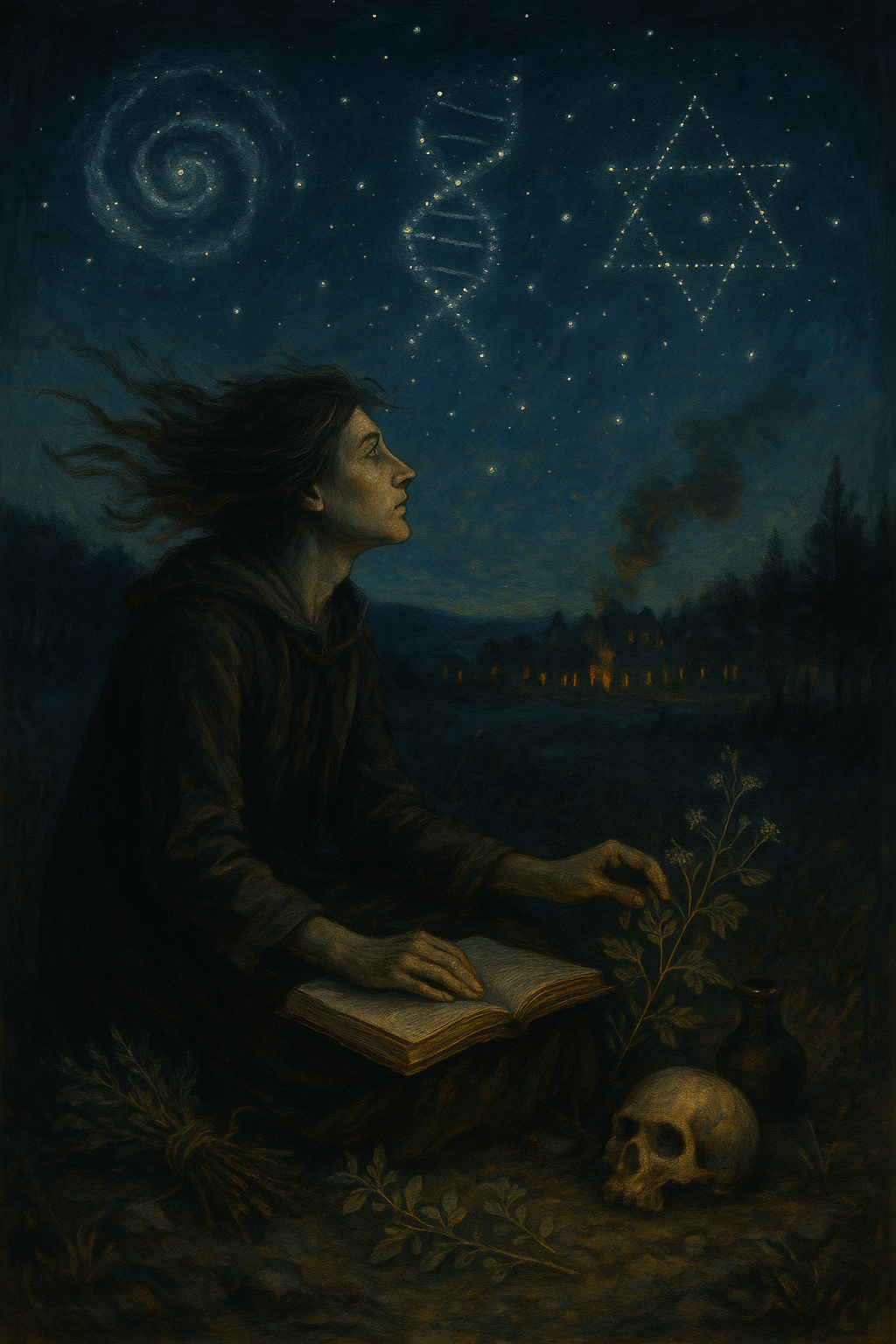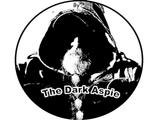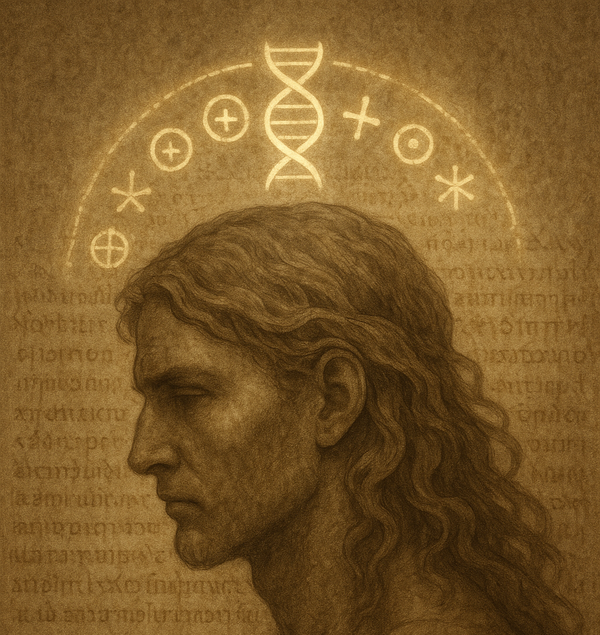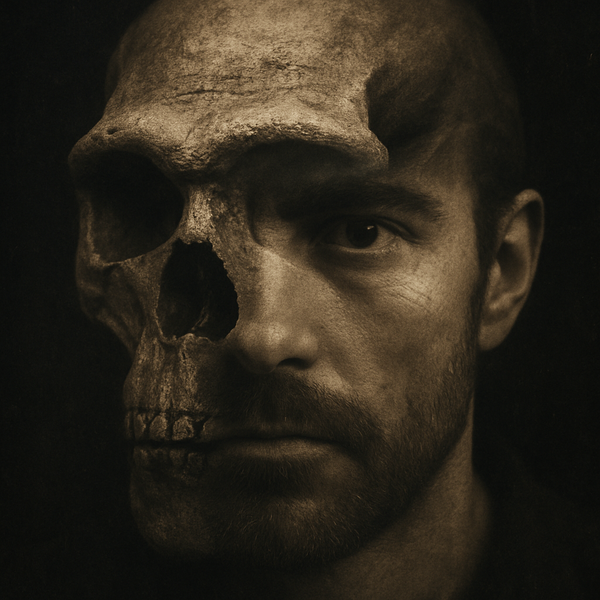The Burnings: Witch Hunts, Neurodivergence, and the Cost of Misunderstanding

"They called it witchcraft. But all I did was speak to the wind, tend to herbs, and watch the stars while others slept."
Introduction: The Smell of Smoke
The scent of burning peat and flesh lingers in Europe’s collective memory—not just as a record of religious terror, but as a warning of what happens when difference becomes a threat. Picture a 17th-century village: tight-knit, suspicious, and ruled by fear cloaked in faith. A woman who lives alone, talks to animals, and avoids the church is accused of being in league with the devil. Or a man who wanders the woods alone, muttering to himself and collecting herbs—accused of cursing livestock. These were not isolated incidents, but echoes of a broader panic.
Though centuries have passed, society still struggles to understand neurodivergence—often preferring conformity to compassion. The witch trials may be long over, but the impulse to punish the unfamiliar remains.
Witch hunts rose sharply during times of upheaval—famine, disease, war, and uncertainty all demanded a scapegoat. And that scapegoat was often the person who didn’t blend in. But what if these victims weren’t witches at all? What if they were autistic, synesthetic, or neurologically divergent in ways that made their perception—and behavior—feel alien to the frightened majority?
In this chapter, we examine the witch trials not just as a symptom of patriarchal control or religious hysteria—but as a cultural purge of neurodivergent minds. Those who didn’t conform, who didn’t communicate "properly," who behaved in ways that society couldn’t explain, were often cast out—by rope, by fire, or by drowning.
While this chapter focuses on European witch trials, similar persecution of behavioral nonconformity occurred across cultures—from African spiritual purges to accusations of sorcery in colonial Latin America.
The Perfect Target: Who Was Branded a Witch?
Historical witch trial records show a clear pattern: the accused were overwhelmingly women, particularly those who were unmarried, widowed, or childless. Many were midwives, herbalists, or simply reclusive. In other words, they were people who did not fit comfortably into society’s expected roles (Salem Witch Museum, [Smithsonian, 2021]).
In Scotland, Isobel Gowdie confessed—under duress—to flying through the air and speaking to animals ([Levack, 2006]). In Germany, men like Johannes Junius were executed after letters to their daughters showed no guilt—only confusion at the accusations ([Hutton, The Witch, 2017]). These weren’t confessions of power, but pleas from people who didn’t understand what was happening.
Many of the women accused of witchcraft in Salem—like Sarah Good, Sarah Osborne, and Bridget Bishop—were described as contentious, odd, or “not quite right.” Bishop wore brightly colored clothing and ran a tavern—behaviors that broke gender norms. Sarah Good muttered to herself and wandered the streets—behaviors that may now be recognized as stress responses or neurodivergent coping mechanisms ([Salem Witch Trials Documentary Archive, UVA]).
Many of the traits commonly cited in trial testimony echo modern neurodivergent profiles, including:
- Avoidance of eye contact
- Tendency toward solitude or silence
- Repetitive behaviors (stimming, pacing)
- Unusual speech patterns or literal thinking
- Hypersensitivity to noise, touch, or smell
- Strong empathy toward animals or plants
- Intense interest in nature, herbs, astronomy, or symbols
In today’s framework, these would suggest autism spectrum traits, sensory processing disorder, or ADHD ([DSM-5, 2013]). In early modern Europe, they made you other. And the “other” was dangerous.
Pattern Misread: Neurodivergence as Devilry
In deeply religious societies, behaviors that broke from the norm weren’t seen as neurological—they were interpreted as moral. To question a priest was heresy. To struggle with crowds was pride. To speak oddly was to channel spirits. The inability to conform was not treated with understanding—it was met with punishment.
A person who hummed or rocked rhythmically could be accused of entering a trance. Someone who recoiled at the touch of holy water might be declared possessed. Ritual repetition—common in both autism and OCD—could be mistaken for spellcasting. Echolalia, the repetition of prayers or sounds, could resemble incantation ([Bartholomew & Wessely, 2002]).
Even honesty became dangerous. A neurodivergent mind that insisted on truth, regardless of power or social convention, was seen as disruptive. If someone corrected a clergyman's interpretation of scripture or spoke bluntly about visions or dreams, it was viewed as arrogance—or heresy. And in a time when conformity was survival, disruption was deadly.
Autistic shutdowns or meltdowns—often misunderstood even today—might have been interpreted as refusal to repent or resistance to spiritual authority. A frightened or overloaded mind might freeze or collapse under questioning, which could then be framed as guilt or possession. A sudden scream, flinch, or collapse at the ringing of a bell or touch of holy water might have been seen as demonic resistance—rather than the sensory overload of an autistic or epileptic mind.
The Role of the Church and Patriarchy
The church—particularly during the Inquisition and the Protestant reformations—was obsessed with rooting out what it saw as spiritual infection. But "spiritual infection" often mapped directly onto behavioral deviation. Deviance from expected roles was seen as defiance of divine order ([Roper, Witch Craze, 2004]).
Patriarchal control reinforced this. Women who spoke out, who did not marry, who resisted male authority, or who practiced independent thought, were doubly dangerous. If they also displayed unusual behaviors or speech, they were accused of witchcraft almost as a reflex. Those with detailed knowledge of herbs or cycles of the moon, who spent time with animals or alone in the woods, were especially vulnerable.
Men weren’t immune either. Records show that older men with isolated lifestyles, strange habits, or odd inventions were sometimes branded witches or heretics ([Hutton, 2017]). The common thread wasn’t gender—it was neurotype. Those who didn't conform socially, intellectually, or emotionally became targets of a system that demanded sameness.
The Burnings: Methods and Misinterpretations
Torture was used to extract confessions—often from those who didn’t understand the accusations. Neurodivergent individuals are known for their struggles with coercion and verbal pressure. Under torture, they may repeat what they’re told, not out of guilt, but confusion or a desire to end pain. These confessions were used as proof ([Gaskill, Witchfinders, 2005]).
Common methods included sleep deprivation, starvation, isolation, and devices like the thumbscrew or the rack. For someone with sensory processing issues, even minor discomfort could become overwhelming. When compounded with psychological trauma, it’s easy to see how forced confessions became common.
The very traits that made someone vulnerable—honesty, emotional flatness under stress, or sensory overwhelm—were twisted into evidence of guilt. Their silence was not stoicism—it was shutdown. Their emotionless responses were not coldness—they were coping. But no one asked. And no one listened.
Echoes in Modern Diagnosis
How many who burned would today be diagnosed with autism? Or OCD? Or Tourette's? Or a combination of conditions that we now understand as part of the neurodivergent spectrum?
Temple Grandin has described her sensory world as more aligned with animals than humans—a world of vivid texture, motion, and sound ([Grandin, Thinking in Pictures, 1995]). In earlier centuries, this bond with the animal world would have been seen not as a neurological gift, but as evidence of beastly affinity. How many were killed simply because they saw and felt differently?
The mob doesn’t carry pitchforks anymore—it carries hashtags. Misread intent becomes motive. A difference in tone becomes a signal of guilt. The inquisition wears new robes.
Conclusion: They Weren’t Witches. They Were Wired Differently.
The witch trials were more than mass hysteria—they were mass misunderstanding. Neurodivergent people were branded witches not because of evil, but because of misread cues, rigid doctrine, and cultural fear of the unknown.
They burned people not for what they did, but for the shape of their minds. They drowned people for hearing the world through different senses. They condemned people for the very architecture of their being.
And while the flames are gone, the fear of difference still lingers.
The gallows have changed shape—but they still stand, waiting for anyone who dares to be different.
The next chapter will explore how these misunderstandings evolved—shifting from witch hunts to asylums, diagnoses, and institutionalization in the modern era.
Next in the series:
Walls and Wires: Neurodivergence in the Age of Institutions
📚 References
- American Psychiatric Association. Diagnostic and Statistical Manual of Mental Disorders (DSM-5). 5th ed., 2013.
- Bartholomew, Robert E., and Simon Wessely. “Mass Hysteria in Schools: An International and Historical Overview.” Educational and Child Psychology, vol. 19, no. 4, 2002.
- Gaskill, Malcolm. Witchfinders: A Seventeenth-Century English Tragedy. Harvard University Press, 2005.
- Grandin, Temple. Thinking in Pictures: My Life with Autism. Vintage, 1995.
- Hutton, Ronald. The Witch: A History of Fear, from Ancient Times to the Present. Yale University Press, 2017.
- Levack, Brian P. The Witch-Hunt in Early Modern Europe. 3rd ed., Pearson Longman, 2006.
- Roper, Lyndal. Witch Craze: Terror and Fantasy in Baroque Germany. Yale University Press, 2004.
- Salem Witch Museum. https://salemwitchmuseum.com
- Salem Witch Trials Documentary Archive and Transcription Project. University of Virginia. http://salem.lib.virginia.edu
- Smithsonian Magazine. “A Brief History of the Salem Witch Trials.” Oct. 2021. https://www.smithsonianmag.com




